Discover how to make Bobo de Camarão, a delicious Brazilian shrimp stew. This step-by-step recipe includes ingredients, instructions, nutritional information, and FAQs to help you perfect this traditional dish.
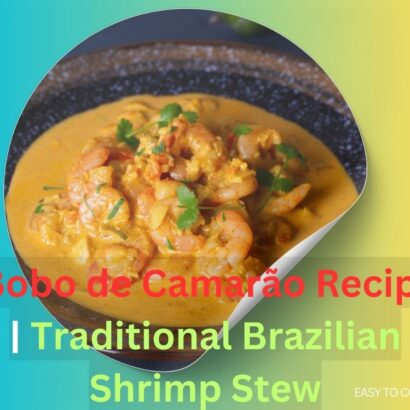
Introduction
Brazilian cuisine is a rich tapestry of flavors and traditions, reflecting the country’s diverse cultural influences. One dish that stands out as a quintessential representation of this fusion is Bobo de Camarão. This creamy shrimp stew is a favorite in the coastal regions of Brazil, particularly in Bahia, where African, Portuguese, and Indigenous culinary elements come together to create something truly unique.
In this blog post, we’ll delve into the origins of Bobo de Camarão, guide you through the process of making this savory dish, and provide you with all the nutritional information you need. Whether you’re a seasoned chef or a beginner in the kitchen, this recipe will transport your taste buds to the vibrant shores of Brazil.
Table of Contents
Ingredients
For the Bobo de Camarão, you’ll need the following ingredients:
- Shrimp: 1 kg (2.2 lbs) of fresh, large shrimp, peeled and deveined
- Cassava (Yuca): 500g (1.1 lbs), peeled and chopped
- Coconut Milk: 400ml (14 oz)
- Olive Oil: 2 tablespoons
- Onion: 1 large, finely chopped
- Garlic: 4 cloves, minced
- Red Bell Pepper: 1 large, diced
- Tomatoes: 2 medium, chopped
- Dendê Oil (Palm Oil): 2 tablespoons (optional for authenticity)
- Cilantro: 1/2 cup, chopped
- Lime Juice: 2 tablespoons
- Salt and Pepper: to taste
- Fish Stock: 500ml (17 oz) or water
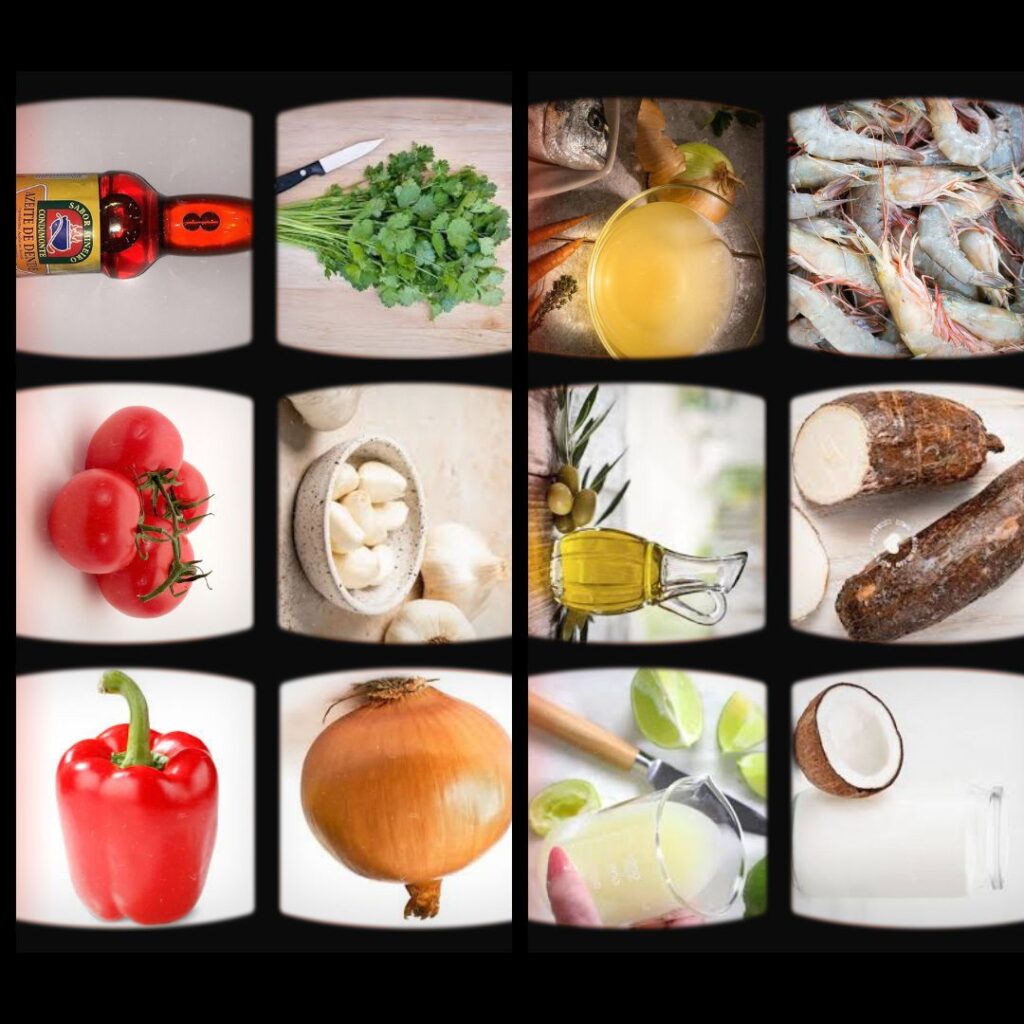
Instructions
- Prepare the Cassava:
- Start by boiling the chopped cassava in a pot of salted water until it’s tender, about 20–25 minutes. Once cooked, drain and mash it until smooth. Set aside.
- Cook the Shrimp:
- In a large pot, heat the olive oil over medium heat. Add the chopped onion and sauté until translucent. Then, add the minced garlic and cook for another minute until fragrant.
- Add the shrimp to the pot and cook until they turn pink, about 3-4 minutes. Remove the shrimp from the pot and set them aside, leaving the onion and garlic mixture in the pot.
- Prepare the Stew Base:
- To the pot with the onion and garlic, add the diced red bell pepper and chopped tomatoes. Cook for 5-7 minutes until the vegetables soften and release their juices.
- Pour in the fish stock (or water) and bring the mixture to a simmer. Add the mashed cassava and coconut milk, stirring until everything is well combined.
- Simmer and Blend:
- Let the mixture simmer for about 10 minutes, allowing the flavors to meld together. If you want a smoother consistency, use an immersion blender to blend the mixture until smooth.
- Add the Shrimp and Final Touches:
- Return the cooked shrimp to the pot, along with the dendê oil (if using) and lime juice. Stir everything together and cook for another 5 minutes until the shrimp are heated through.
- Season with salt and pepper, to taste. Garnish with chopped cilantro before serving.
- Serve:
- Bobo de Camarão is traditionally served with white rice and farofa (toasted cassava flour). The combination of flavors and textures makes for a hearty and satisfying meal.
Nutritional Information (per serving)
- Calories: 450 kcal
- Protein: 30g (60% DV)
- Fat: 22g (34% DV)
- Saturated Fat: 14g (70% DV)
- Carbohydrates: 38g (13% DV)
- Dietary Fiber: 4g (16% DV)
- Sugars: 3g
- Cholesterol: 215mg (72% DV)
- Sodium: 820mg (34% DV)
- Vitamin A: 25% DV
- Vitamin C: 45% DV
- Calcium: 15% DV
- Iron: 20% DV
DV = Daily Value based on a 2,000-calorie diet.
SEO Tips and Considerations
To ensure this blog post ranks well on search engines like Google, consider the following SEO tips:
- Focus Keyword: Use the keyword Bobo de Camarão strategically throughout the post. Aim to include it in the title, first paragraph, meta description, headers, and naturally within the content. However, avoid keyword stuffing to maintain a natural flow.
- Meta Tags: Ensure your meta title and meta description are concise, compelling, and include the focus keyword. They should provide a clear overview of the content to attract clicks.
- Internal Links: Link to other related posts on your blog, such as recipes for other Brazilian dishes or posts about Brazilian cuisine. This helps keep users engaged and improves site structure.
- Alt Text for Images: If you include images of the dish, use descriptive alt text that includes the focus keyword. For example, “Delicious Bobo de Camarão served with white rice.”
- Mobile Optimization: Ensure the blog post is optimized for mobile users. A significant portion of users will access the content on their smartphones, so readability and page load speed are crucial.
- Engagement: Encourage comments and social sharing at the end of the post to increase engagement. You can ask readers to share their own versions of the recipe or tips for making the dish.
FAQs about Bobo de Camarão
1. What is Bobo de Camarão?
Bobo de Camarão is a traditional Brazilian shrimp stew made with cassava, coconut milk, and various seasonings. It’s known for its creamy texture and rich flavors, often served with rice.
2. Can I make Bobo de Camarão without dendê oil?
Yes, you can make Bobo de Camarão without dendê oil. While it adds a unique flavor and color, you can substitute it with more olive oil or omit it altogether if it’s not available.
3. Is cassava the same as yuca?
Yes, cassava and yuca refer to the same root vegetable. It is a starchy tuber commonly used in tropical regions and is a key ingredient in Bobo de Camarão.
4. How can I store leftovers?
Leftovers can be stored in an airtight container in the refrigerator for up to 3 days. Reheat gently on the stove, adding a splash of water or coconut milk if the stew thickens too much.
5. Can I freeze Bobo de Camarão?
Yes, Bobo de Camarão can be frozen. Allow the stew to cool completely, then transfer it to a freezer-safe container. It can be frozen for up to 3 months. Thaw in the refrigerator before reheating.
Conclusion
Bobo de Camarão is more than just a dish; it’s a culinary experience that captures the essence of Brazilian cuisine. With its creamy texture and vibrant flavors, it’s no wonder this shrimp stew is beloved across Brazil. By following this recipe, you can bring a taste of Brazil into your kitchen and enjoy a meal that’s both comforting and exotic.
Feel free to experiment with the ingredients and make this dish your own. Whether you’re cooking for family, friends, or just yourself, Bobo de Camarão is sure to impress.
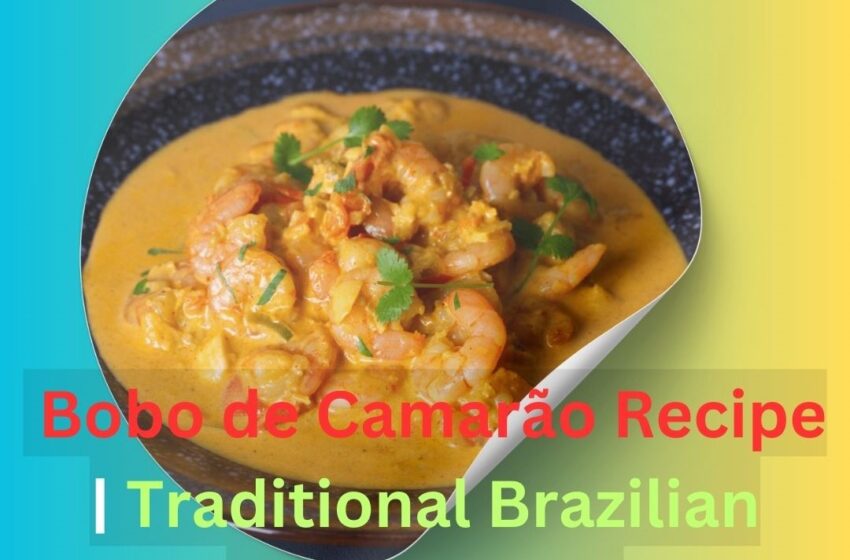

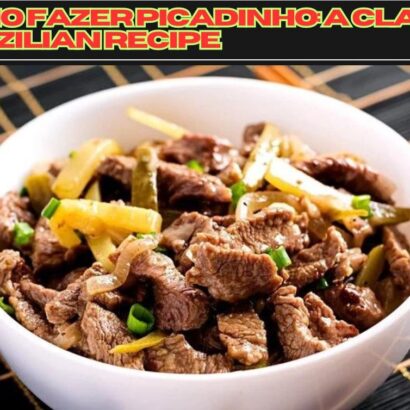


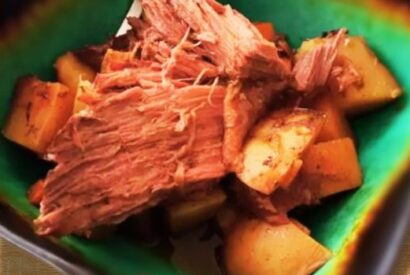
You can definitely see your expertise within the work you write. The world hopes for even more passionate writers like you who aren’t afraid to mention how they believe. Always follow your heart.